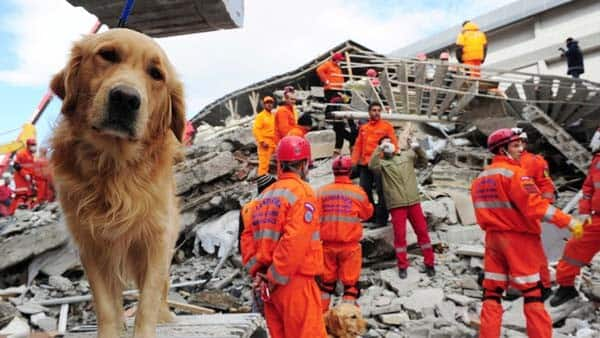
Scientists to study dogs, goats to predict earthquakes, volcanic eruptions
What's the story
A team of scientists is using the instinctive behavior of animals to predict natural disasters such as earthquakes and volcanic eruptions, according to The Guardian.
The project involves tracking the movements of different animals, including dogs and goats, through tiny transmitters attached to them.
These devices will send data to a dedicated satellite, which is set to launch next year.
The initiative is led by Martin Wikelski from Germany's Max Planck Institute of Animal Behavior.
Global network
Project aims to establish global observation network
The project's ultimate aim is to establish a global observation network with some six satellites.
This network would keep track of wildlife movements and animal health across the globe, offering valuable insights into how animals react to natural disasters.
"We have found the behavior of goats is pretty good at predicting large volcanic eruptions," Wikelski said, emphasizing the potential of this innovative approach.
Animal instincts
Animals' behavior could indicate imminent natural disasters
The project has already produced promising results, with goats displaying nervousness before volcanic eruptions and refusing to move to higher pastures.
Likewise, dogs and other farm animals have exhibited behaviors predicting seven out of eight major earthquakes in Italy over the last 12 years.
These observations indicate that animals may have an innate ability to sense impending natural disasters.
Tech revolution
Advanced tagging technology enables animal tracking
The project, dubbed the International Cooperation for Animal Research Using Space (ICARUS), has been made possible by advancements in tagging technology.
Tiny digital transmitters and mini GPS devices now enable lightweight tags that can track most vertebrate species.
"We are going from where we couldn't really track most vertebrate species on the planet to flipping it," said Michigan University ecologist Scott Yanco.
Additional insights
Project also monitors wildlife health and migration patterns
Along with predicting natural disasters, the project also hopes to monitor wildlife health and learn about their migration patterns.
For instance, electronic ear tags have been deployed on wild boar to detect African swine fever.
"This is a game-changer for wildlife disease monitoring," said Kevin Morelle from the Max Planck Institute.
The tech is even being used to track creatures as small as death's-head hawkmoths, revealing their long-distance migrations.
Satellite launch
ICARUS CubeSat to replace halted cooperation with Russia
The ICARUS project was originally supposed to collaborate with Russian scientists using a radio telescope on the International Space Station. However, the collaboration was called off amid geopolitical tensions.
As a replacement, the team has now designed a small satellite, dubbed the ICARUS CubeSat, which will be launched next year.
"That should provide us with a massive amount of data about the way animals behave," the team said.